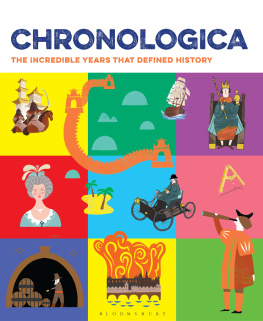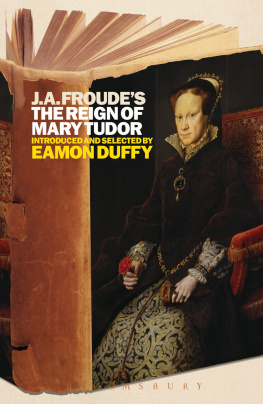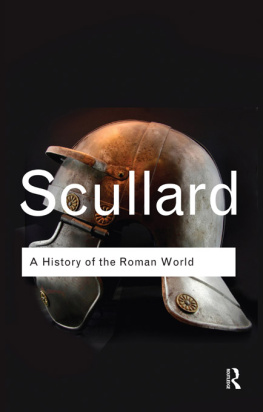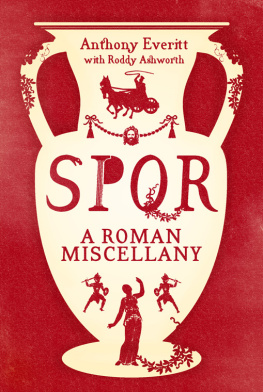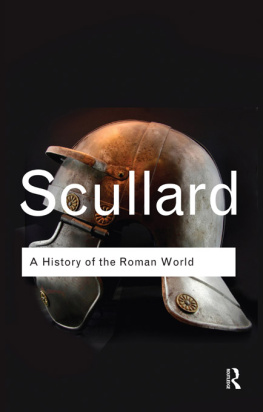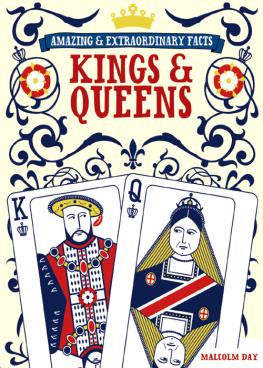
Bloomsbury Publishing
An imprint of Bloomsbury Publishing Plc
| 50 Bedford Square | 1385 Broadway |
| London | New York |
| WC1B 3DP | NY 10018 |
| UK | USA |
www.bloomsbury.com
This electronic edition published in 2016 by Bloomsbury Publishing Plc
WHITAKERS, the W Trident logo and the Diana logo are trademarks of Bloomsbury Publishing Plc
First published in Great Britain in November 2016 by Bloomsbury Publishing Plc
Text copyright Bloomsbury Publishing 2016
Illustrations copyright Debbie Powell 2016, The Artworks www.theartworksinc.com
Adam Hancher 2016, The Artworks www.theartworksinc.com
JP22016, www.jasmineillustration.com
The moral rights of the illustrators have been asserted
All rights reserved
You may not copy, distribute, transmit, reproduce or otherwise make available this publication (or any part of it) in any form, or by any means (including without limitation electronic, digital, optical, mechanical, photocopying, printing, recording or otherwise), without the prior written permission of the publisher. Any person who does any unauthorised act in relation to this publication may be liable to criminal prosecution and civil claims for damages.
No responsibility for loss caused to any individual or organization acting on or refraining from action as a result of the material in this publication can be accepted by Bloomsbury or the author.
British Library Cataloguing-in-Publication Data
A catalogue record for this book is available from the British Library.
| ISBN: | HB: | 978-1-4729-3294-5 |
| ePub: | 978-1-4729-3295-2 |
To find out more about our authors and their books please visit www.bloomsbury.com where you will find extracts, author interviews and details of forthcoming events, and to be the first to hear about latest releases and special offers, sign up for our newsletters.
Contents
ABOUT WHITAKERS THE TEAM BEHIND CHRONOLOGICA
CHRONOLOGICA is written and compiled by the team behind Whitakers Almanack one of the oldest annual reference books in the UK. Jam-packed full of facts and figures on topics including: Politics, Kings and Queens, World Geography, Art, Music, Science and Sport. The first edition was published on 10 December 1868 and was such a success that it had to be reprinted immediately!
In 1878 a copy of Whitakers was included in a time capsule buried beneath the monument Cleopatras Needle on the Embankment in London, together with a set of contemporary coins and a copy of The Times newspaper.
On 29 December 1940, a wartime bombing raid struck the Whitakers editorial offices in Warwick Lane, obliterating almost all the archive and reference library used to compile the book. This prompted Prime Minister Winston Churchill to write to Sir Cuthbert Whitaker seeking assurances that the publication of Whitakers would not be interrupted: a measure of the books importance.
Whitakers Almanack is mentioned in many famous works of literature, including Bram Stokers Dracula and Ian Flemings James Bond novel Moonraker. A copy of Whitakers is even used by Sherlock Holmes to decode a message in Sir Arthur Conan Doyles fourth and final Holmes mystery The Valley of Fear.
We hope you enjoy the fascinating journey through time which is CHRONOLOGICA: The Incredible Years That Defined History.
The Whitakers Team
| 50 Bedford Square | EDITORIAL STAFF |
| London WC1B 3DP | Project Editor: Oli Lurie |
| Editorial Assistant: Pari Thomson |
| www.whitakersalmanack.com | Executive Editor: Ruth Northey |

753 BC
THE MYTH OF ROMULUS AND REMUS

Romulus and Remus were twin boys and the pivotal characters of Romes foundation myth. According to the myth their mother was princess Rhea Silvia, daughter of Numitor, King of Alba Longa and their father was Mars, the Roman god of war. Before the twins were born, Numitors brother Amulius seized power, killed Numitors male heirs and forced Rhea Silvia to become a priestess to the goddess Vesta.
Following the birth of the boys Amulius had Rhea Silvia thrown into the river Tiber where she was caught beneath the waves by the river god who married her. The twin boys were set adrift on the river in a reed basket which floated downstream until the basket was caught in the branches of a fig tree where they were found by a she-wolf who suckled them until they were found by a shepherd and his wife who raised the boys as their own.
The twins proved to be natural leaders and each acquired many followers. When they discovered their true origins, the twins raised an army and marched on Alba Longa slaying Amulius and restoring Numitor to the throne.
Rather than wait to inherit Alba Longa, Romulus and Remus chose to found a new city. The twins disputed which hill their city should be built on, Romulus favouring the Palatine, Remus choosing the Aventine. On the hill favoured by Remus there were six vultures, but on the hill preferred by Romulus there were 12. Romulus took this as a sign from the gods and founded the new city, named it Rome, after himself, and started to build a wall around the Palatine Hill. However, Remus was jealous and began to make fun of Romulus wall. At one point Remus jumped over the wall to show how easy it was to cross. Romulus became angry, the twins fought and Remus was killed.
With Remus dead, Romulus continued to build his city and created its first army and senate. The image of the she-wolf suckling the divinely fathered twins has become an iconic representation of the city and its founding legend.
THE FOUNDING OF ROME
Disregarding the myth of Romulus and Remus, Greek writers of the fifth century BC credited the foundation of Rome to the Trojan legend Aeneas. The Greeks believed that Aeneas had travelled to Italy and settled near Rome, following the fall of Troy in 1184 BC from which he was the only hero to have survived the Greek invasion, according to Homers epic poem, the Iliad. Aeneas married Lavinia, the daughter of a local king named Latinus upon his arrival in central Italy and from their marriage a kingdom of Alba Longa was established, which eventually resulted in the monarchy of King Numitor, whereby the story evolved over time so that by the first century BC the stories of Aeneas and Romulus and Remus combined into the account of Romes foundation.
Upon Romes foundation in 753 BC, Romulus was believed to have offered refuge to exiles and refugees who were not welcome in other settlements. However, as Rome lacked female citizens, Romulus devised a plan in which he invited Romes neighbouring community, the Sabines, to a festival but his invitation was a trick and on his order the men of Rome abducted the Sabine women. After a war broke out between the two communities, the Sabine women now resident in Rome, persuaded the Sabines not to seize the new city and instead a pact was agreed whereby Romulus and the Sabine king, Titus Tatius, jointly ruled.
Next page
